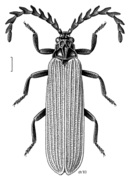
Zopheridae is a family of beetles belonging to Tenebrionoidea. It has grown considerably in recent years as the members of two other families have been included within its circumscription; these former families are the Monommatidae and the Colydiidae, which are now both included in the Zopheridae as subfamilies or even as tribe of subfamily Zopherinae. Some authors accept up to six subfamilies here, while others merge all except the Colydiinae into the Zopherinae.

The Ototretinae are a small subfamily in the firefly family (Lampyridae). They are close to the Luciolinae in some respects, but do not glow or flash. Rather, they attract their partners with pheromones like many relatives of the firefly family. They are found in Eurasia and North America.

Melyridae are a family of beetles of the superfamily Cleroidea.

Conognatha is a genus of beetles in the family Buprestidae, tribe Stigmoderini, containing the following species: They are found in the Neotropical realm.

Lampetis is a genus of beetles in the family Buprestidae, containing the following species:
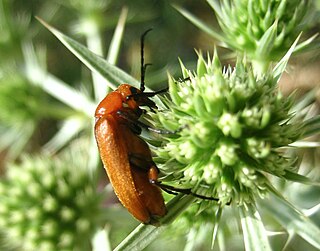
Zonitis is a genus of blister beetles in the family Meloidae. The genus was named and described by Johan Christian Fabricius in 1775.
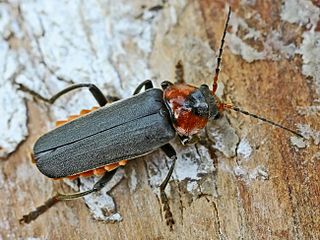
Cantharinae is a subfamily of beetles in the family Cantharidae. There are at least 200 described species in Cantharinae.

Cantharini is a tribe of soldier beetles in the family Cantharidae. There are more than 40 genera and over 500 described species in Cantharini.

Plateros is a genus of net-winged beetles in the family Lycidae and the tribe Platerodini. Species are recorded from the Americas, Africa and Asia, including Sri Lanka, Indochina, Korea and Japan.
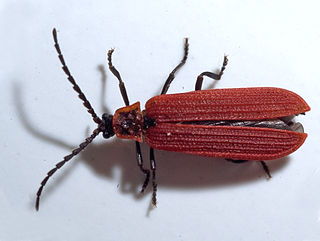
Erotinae is a subfamily of net-winged beetles in the family Lycidae. There are about 10 genera and 19 described species in Erotinae.
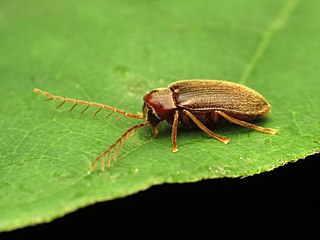
Ptilodactylidae is a family of beetles belonging to the Elateriformia. There around 500 extant species in 35 genera. They are generally associated with riparian and aquatic habitats. The larvae generally live associated with rotting wood or vegetation, or within gravel and detritus on the edge of water bodies. The larvae of some species feed on submerged rotting wood or on plant roots, while the adults of some species are known to feed on fungus with modified brush-like maxillae.
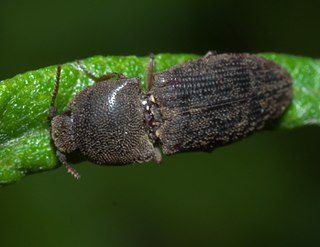
Agrypninae is a subfamily of click beetles in the family Elateridae. There are at least 130 genera and more than 430 described species in Agrypninae.

Calopteron is a genus of net-winged beetles in the family Lycidae.

Lycinae is a subfamily of net-winged beetles in the family Lycidae.

Calochrominae is a subfamily of net-winged beetles in the family Lycidae. There are at least 4 genera and more than 30 described species in Calochrominae.

Brentinae is a subfamily of primitive weevils in the family of beetles known as Brentidae. There are at least 90 genera and 520 described species in Brentinae.
Trachelizini is a tribe of primitive weevils in the family of beetles known as Brentidae. There are at least 100 genera in Trachelizini.
The Lycini is a species-rich beetle tribe belonging to the subfamily Lycinae

Leptolycinae is a subfamily of the Lycidae or "net-winged beetles" erected by Leng and Mutchler in 1922. This subfamily includes notable genera such as Platerodrilus, which are sometimes called "trilobite beetles".






